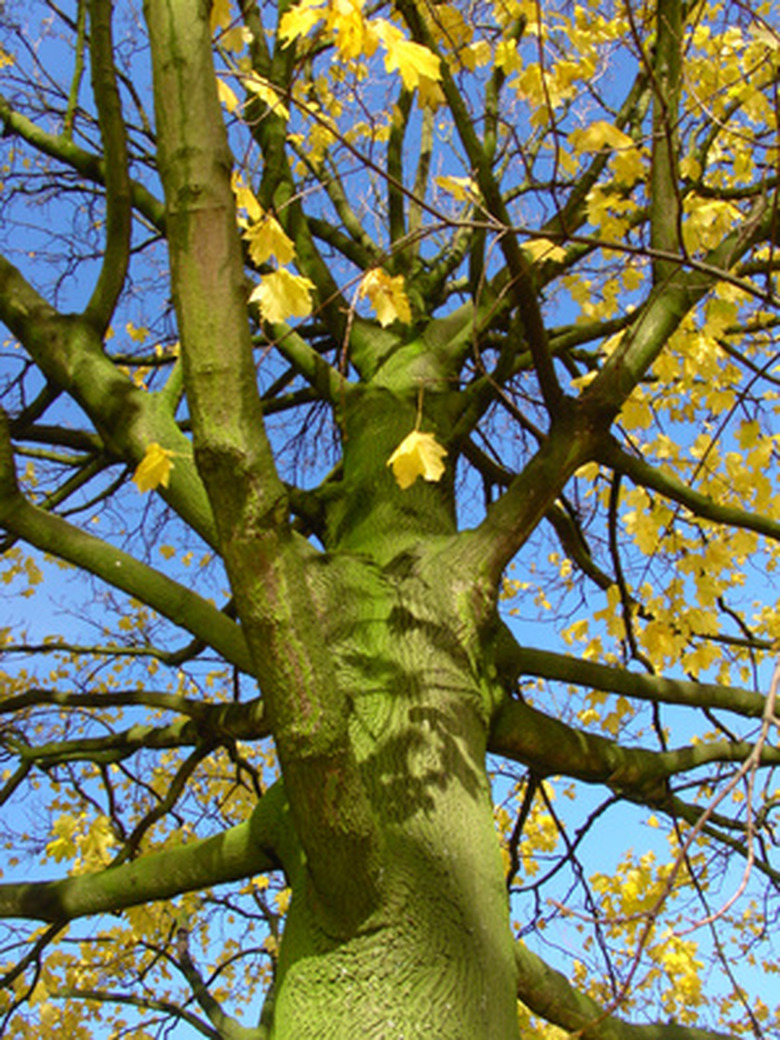Water Oak Tree Diseases
The water oak tree grows quickly–up to 25 feet in 10 years, and ultimately up to 60 feet tall and 60 feet wide–but does not live beyond 50 years due to shallow root systems, low decay resistance and susceptibility to injury from wind, snow and ice. Water oaks are hardy in USDA Hardiness Zones 6 to 10 and have yellow fall color. This tree produces abundant acorns that tend to stain asphalt and concrete.
Oak Wilt
The fungus, Certocystis fagacearum, causes oak wilt. This disease affects all oaks. The major symptom of oak wilt is the death of the leaf veins. These veins turn brown as they die while the rest of the leaf might not change in color, or may turn yellow. The leaves drop off the tree, even though they are green. This process starts on one branch and spreads to the rest of the tree. Beetles that feed on sap and root grafts spread the disease.
- The water oak tree grows quickly–up to 25 feet in 10 years, and ultimately up to 60 feet tall and 60 feet wide–but does not live beyond 50 years due to shallow root systems, low decay resistance and susceptibility to injury from wind, snow and ice.
The only way to control this disease is to destroy the tree as soon as possible and remove or burn the stumps. A ditch must be dug around the infected tree to prevent the spread of the disease. Vapam, a chemical treatment, can be applied to the ditch very carefully. For this reason, the presence of the disease should be confirmed professionally before treatment proceeds.
Canker Diseases
Several fungi cause canker diseases, such as Irpex mollis, Polyporus hispidus and Poria spiculosa. Cankers are circular with indentations in the center. These form after limbs fall off. This disease can be controlled by removing dead limbs and preventing tree injuries, as they become sites for infection. In the case of hypoxylon canker, the Hypoxylon fungus causes branches to die. The foliage turns yellow and the disease moves from branch to branch until the tree dies. This usually takes a year or more.
- The only way to control this disease is to destroy the tree as soon as possible and remove or burn the stumps.
- This disease can be controlled by removing dead limbs and preventing tree injuries, as they become sites for infection.
Near the time of tree death, the outer bark falls off to expose the fungus spores, which disappear and are replaced by structures which discharge spores away from the tree. Infection of other trees occurs when these spores blow onto injury sites of surrounding trees. Tree stress contributes to this disease, as does excess fill soil when planting the tree. Injury avoidance and proper maintenance of the tree control the spread of the disease.
Oak Decline
The fungus Cephalosporium diospyri causes a disease known as oak decline. This fungus causes the tree to thin at the top because the twigs die back. Each year this condition worsens until the large limbs begin to die. This process can take up to 10 years to occur on some oak species. Root grafting and bark beetles cause the spread of this disease. Reducing stress on the tree will slow the spread of the disease. Proper fertilization and watering and removal of dead limbs must also be done. Wood from infected areas should not be transported to uninfected areas.
- Near the time of tree death, the outer bark falls off to expose the fungus spores, which disappear and are replaced by structures which discharge spores away from the tree.
- Reducing stress on the tree will slow the spread of the disease.
